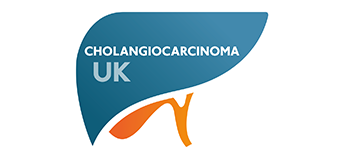AMMF’s Virtual 2021 European Cholangiocarcinoma Conference
Abstract No 16
FOSL1 promotes cholangiocarcinoma via transcriptional effectors that could be therapeutically targeted
Adrián Vallejo1,$, Oihane Erice1,2,$, Rodrigo Entrialgo-Cadierno1,$, Iker Feliu1, Elizabeth Guruceaga2,3,4, Maria J. Perugorria5,6,7, Paula Olaizola6, Alexandra Muggli8, Irati Macaya1, Michael O’Dell9, Borja Ruiz-Fernandez de Cordoba1, Sergio Ortiz-Espinosa1, Aram F. Hezel9, Imanol Arozarena4,10,11, Fernando Lecanda1,2,12,13, Matias A. Avila2,7,14, Maite G. Fernández-Barrena2,7,14, Matthias Evert8, Mariano Ponz-Sarvise15, Diego F. Calvisi8, Jesus M. Banales6,7,16, Silve Vicent1,2,12,13,*
1.University of Navarra, Centre for Applied Medical Research, Program in Solid Tumours, Pamplona, SPAIN.
2.IdiSNA, Navarra Institute for Health Research, Pamplona, Spain.
3.Centre for Applied Medical Research, Computational Biology Program, Pamplona, Spain.
4.ProteoRed-Instituto de Salud Carlos III (ISCIII), Madrid, Spain.
5.University of the Basque Country, San Sebastian, Spain.
6.Department of Liver and Gastrointestinal Diseases, Biodonostia Health Research Institute -Donostia University Hospital-, San Sebastian, Spain
7.Centro de Investigación Biomédica en Red de Enfermedades hepáticas (CIBEREhd), Madrid, Spain
8.Institute of Pathology, University of Regensburg, Regensburg, Germany
9.University of Rochester Medical Centre, Rochester, NY, USA
10.Navarrabiomed, Complejo Hospitalario de Navarra (CHN), Pamplona, Spain
11.Universidad Pública de Navarra (UPNA), Pamplona, Spain.
12.Centro de Investigación Biomédica en Red de Cáncer (CIBERONC), Madrid, Spain
13.University of Navarra, Department of Pathology, Anatomy and Physiology, Pamplona, Spain.
14.University of Navarra, Centre for Applied Medical Research, Program in Hepatology, Pamplona, SPAIN.
15.Clinica Universidad de Navarra, Department of Medical Oncology, Pamplona, Spain.
16.Ikerbasque, Basque Foundation for Sciences, Bilbao, Spain.
$ Equal first-author contribution
* Corresponding autor: Silve Vicent, 55 Pio XII Avenue, CIMA, 31008, Pamplona, Spain; telephone: +34 948194700 (ext. 812029); fax: +34 948194714; email: silvevicent@unav.es
Background and aims
Cholangiocarcinoma (CCA) is a neoplasia of the biliary tract driven by genetic, epigenetic and transcriptional mechanisms. Here, we investigated the role of the transcription factor FOSL1, as well as its downstream transcriptional effectors, in the development and progression of CCA.
Methods
FOSL1 was investigated in human CCA clinical samples. Genetic inhibition of FOSL1 in human and mouse CCA cell lines was performed in in vitro and in vivo models using constitutive and inducible shRNAs. Conditional FOSL1 ablation was done using a genetically engineered mouse (GEM) model of CCA (mutant KRAS and Trp53 knockout). Follow-up RNA and ChIP sequencing analyses were carried out and validation of downstream targets using genetic and pharmacological inhibitory approaches was done.
Results
An inter-species analysis of FOSL1 in CCA was conducted. First, FOSL1 was found highly upregulated in human and mouse CCA, and associated with poor patients’ survival. Pharmacological inhibition of different signalling pathways in CCA cells converged on the regulation of FOSL1 expression. Functional experiments showed that FOSL1 is required for cell proliferation and cell cycle progression in vitro, and for tumour growth and tumour maintenance in vivo using both orthotopic and subcutaneous xenograft models. Likewise, FOSL1 genetic abrogation in a GEM model of CCA extended mice survival by decreasing the oncogenic potential of transformed cholangiocytes. RNA and ChIP sequencing studies identified direct and indirect transcriptional effectors such as HMGCS1 and AURKA, whose genetic and pharmacological inhibition phenocopied FOSL1 loss.
Conclusions
Our data illustrate the functional and clinical relevance of FOSL1 in CCA and unveil potential targets amenable to pharmacological inhibition that could serve for the implementation of novel therapeutic strategies.
To view the poster, click here
Back to previous page







